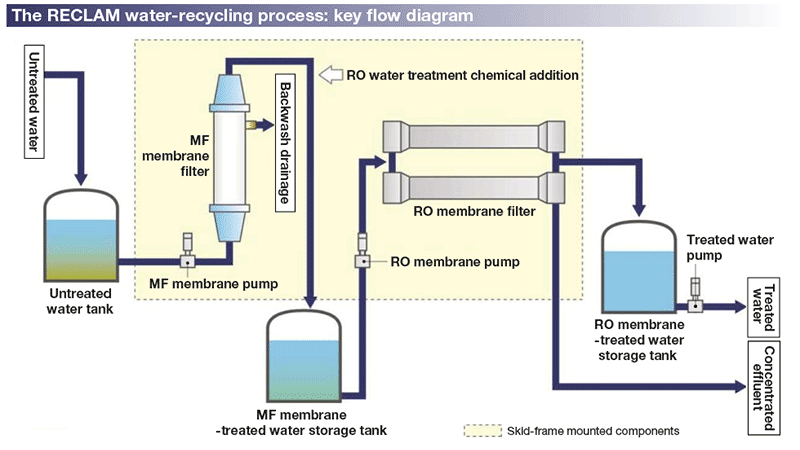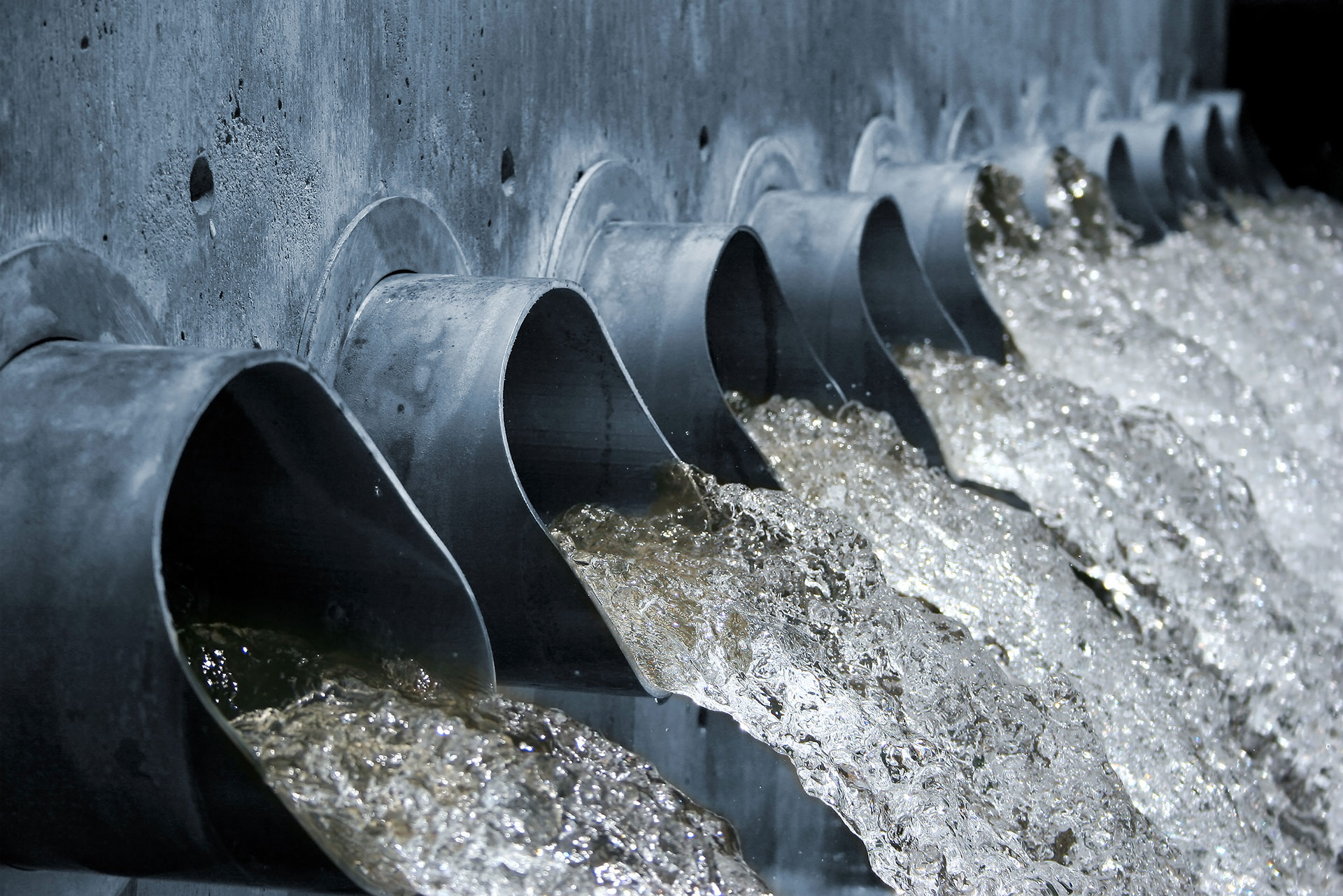Industrial Waste Water Treatment-- Secure the Setting with Professional Water Treatment Providers
Secret Techniques in Hazardous Waste Water Treatment Procedures
The treatment of industrial wastewater is an essential element of ecological management, involving a range of strategies designed to alleviate the influence of impurities. From the fundamental physical techniques that divide solids to the innovative chemical and biological processes that target certain contaminants, each strategy plays a crucial duty in achieving water high quality criteria. Moreover, innovations in modern technologies such as membrane layer purification and progressed oxidation processes use ingenious solutions for improving treatment efficacy. Comprehending just how these techniques adjoin and their effects for sustainability raises crucial inquiries regarding the future of wastewater monitoring in sector.
Physical Therapy Methods
Just how effectively can physical treatment methods deal with the intricacies of industrial wastewater? Physical treatment methods play a critical role in the initial phases of wastewater monitoring, concentrating mostly on the elimination of solids and large particulates. Techniques such as sedimentation, flotation protection, and filtering are important for decreasing the focus of suspended solids, thereby boosting the performance of succeeding treatment processes.
Sedimentation entails the gravitational settling of solids, allowing for the splitting up of heavier products from the wastewater. This approach is specifically efficient in clearing up water prior to chemical or organic treatments.
Furthermore, flotation protection methods, which use air bubbles to lift suspended solids to the surface area for removal, work in treating wastewater with high concentrations of fats, oils, and oils. Overall, physical treatment techniques function as a vital very first action in the thorough management of industrial wastewater, making certain that the tons on subsequent treatment stages is lessened and boosting overall treatment efficiency.
Chemical Treatment Techniques
While physical treatment techniques prepared for efficient wastewater administration, chemical treatment methods are essential for dealing with the more intricate contaminants frequently found in commercial effluents. These techniques make use of different chemical representatives to precipitate, neutralize, or oxidize unsafe substances, making sure a much more thorough elimination of pollutants.
One typical strategy is coagulation and flocculation, where chemical coagulants such as aluminum sulfate or ferric chloride are included in advertise the aggregation of suspended bits. This procedure boosts solid-liquid splitting up, minimizing turbidity and enhancing water quality. In addition, neutralization procedures are used to adjust the pH of wastewater, utilizing bases or acids to neutralize acidic or alkaline streams, specifically.
Oxidation-reduction reactions play a critical role in degrading natural contaminants and microorganisms. Chemical oxidants like ozone, hydrogen, or chlorine peroxide are made use of to break down complicated organic compounds, making them less dangerous or more naturally degradable. Progressed oxidation procedures (AOPs) incorporate multiple oxidation techniques to improve contaminant removal performance.
Organic Therapy Procedures
The efficiency of wastewater treatment is considerably boosted by organic therapy processes, which harness the all-natural metabolic tasks of bacteria to decay natural issue and eliminate pollutants. Industrial Waste Water Treatment. These processes primarily involve cardio and anaerobic food digestion, each customized for certain kinds of wastewater
Cardiovascular therapy processes utilize oxygen to support microbial development, advertising the failure of organic pollutants into co2 and water. Common methods include activated sludge systems, where aeration storage tanks help with the mixing of wastewater with microorganisms, and flowing filters, which motivate biofilm advancement on media surfaces.
Conversely, anaerobic therapy processes take place in the lack of oxygen, using anaerobic bacteria to decay raw material, leading to biogas production, a renewable resource source. Anaerobic digesters are typically utilized in commercial settings for this objective, see this successfully lowering the quantity of sludge while generating beneficial biogas.
The choice of a biological treatment method relies on wastewater qualities, therapy goals, and regulative requirements. The assimilation of biological procedures in wastewater treatment not only boosts contaminant elimination effectiveness but additionally promotes sustainability by lessening chemical usage and supporting resource recovery.
Advanced Oxidation Processes

Typical AOP strategies include Fenton's ozonation, photocatalysis, and reagent. Fenton's reagent, a combination of hydrogen peroxide and ferrous iron, catalyzes the formation of hydroxyl radicals, making it reliable for treating wastewater including phenolic substances and various other stubborn materials.
AOPs supply several advantages, consisting of lowered sludge manufacturing and the capability to treat wastewater with high focus of organic toxins. The application of AOPs requires careful consideration of functional criteria and cost-effectiveness, making certain that these innovative strategies are appropriately integrated into existing wastewater therapy systems.
Membrane Filtering Technologies

Microfiltration is reliable for getting rid of suspended bacteria and solids, while ultrafiltration targets smaller sized organic molecules and infections. Nanofiltration bridges the space in between ultrafiltration and reverse osmosis, efficiently removing natural compounds and divalent ions. Reverse osmosis gives the highest degree of filtration, Read Full Report utilized mainly for desalination and removing mono-valent ions.
Membrane layer technologies provide many advantages, consisting of low energy usage contrasted to conventional treatment techniques, modular style for scalability, and the capacity for water recuperation and reuse. Challenges such as membrane fouling and the need for normal upkeep need to be resolved to ensure system efficiency. On the whole, membrane layer filtering innovations represent a crucial element of contemporary commercial wastewater therapy techniques, advertising sustainability and source conservation in water management.
Conclusion
To conclude, commercial wastewater treatment utilizes a diverse selection of methods, including physical, chemical, organic, and progressed techniques. Each method plays a vital duty in successfully dealing with different contaminants, improving water quality, and advertising resource sustainability. The assimilation of these techniques cultivates a thorough treatment technique, making certain that commercial effluents satisfy regulative requirements while decreasing ecological effect. Continued developments in these techniques will better boost the performance and effectiveness of wastewater treatment procedures in commercial setups.
The therapy of commercial wastewater is a vital facet of ecological monitoring, including a variety of techniques created to mitigate the influence of impurities.Just how effectively can physical therapy techniques address the intricacies of industrial wastewater?Advanced oxidation processes (AOPs) represent an innovative strategy in industrial wastewater therapy, designed to properly weaken natural contaminants that are frequently immune to conventional treatment methods (Industrial Waste Water Treatment).In conclusion, industrial wastewater treatment employs click this link a diverse variety of strategies, consisting of physical, chemical, organic, and progressed methods. Continued advancements in these approaches will certainly further improve the performance and performance of wastewater therapy procedures in commercial settings